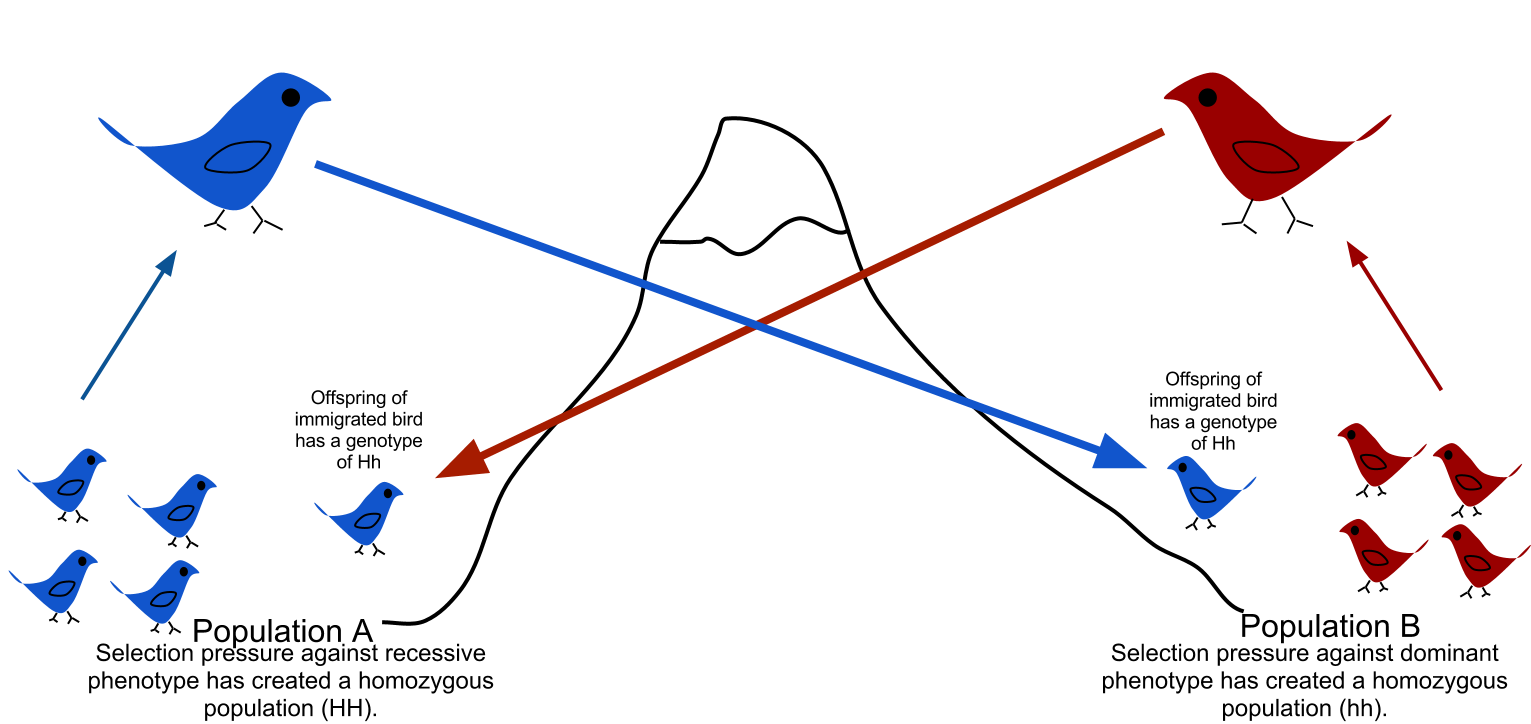Description

Disclaimer: Copyright infringement not intended.
Context
- Ranthambore National Park's tiger population has faced significant challenges due to historical threats like hunting, poaching, and habitat destruction.
- Despite conservation efforts, genetic studies reveal concerns about inbreeding and genetic isolation in the Ranthambore tiger population.
Details
- The majority of Ranthambore tigers trace their lineage back to a single tigress, T16 (Machali), highlighting the lack of genetic diversity.
Implications of Inbreeding
- Inbreeding increases the risk of genetic disorders, physical deformities, and reduced fitness in the population.
- Studies suggest the potential for inbreeding depression, although conclusive evidence is still lacking.
- Genetic purging may mitigate some harmful effects, but the high level of inbreeding poses a significant threat to the population's viability.
Genetic Rescue Strategies
- Genetic rescue involves facilitating gene flow from external populations to increase genetic diversity and counteract inbreeding effects.
- Translocation of tigers from genetically diverse populations into Ranthambore is proposed to introduce new genes and enhance population health.
- Considerations include minimizing the risk of outbreeding depression and selecting suitable source populations for translocation.
Challenges
- Fragmentation of habitats and anthropogenic pressures hinder natural dispersal and gene flow.
- Establishing corridors and increasing connectivity between tiger reserves are essential for facilitating natural migration.
- The urgency of genetic rescue calls for proactive measures, considering pragmatic limitations and long-term prospects.
Conservation Actions
- Collaboration between scientists, managers, and policymakers is crucial for implementing genetic rescue strategies.
- Urgent action is needed to investigate potential inbreeding depression and formulate effective conservation plans.
- Engagement with stakeholders and government agencies is essential for prioritizing genetic rescue initiatives and overcoming bureaucratic hurdles.
About Gene Flow
- Gene flow, also known as genetic migration, refers to the transfer of genetic material between populations of organisms.
- It plays a crucial role in shaping the genetic diversity and evolutionary dynamics of species, influencing their adaptation and speciation processes.

Mechanisms of Gene Flow:
- Natural Dispersal: Organisms disperse naturally through migration, dispersal, or movement, carrying their genetic material to new areas.
- Human-Mediated Dispersal: Human activities, such as trade, transportation, and introduction of non-native species, facilitate gene flow across geographic barriers.
Factors Influencing Gene Flow:
- Physical Barriers: Geographic features, such as mountains, rivers, and oceans, can hinder or facilitate the movement of organisms, affecting gene flow patterns.
- Ecological Factors: Habitat suitability, availability of resources, and ecological interactions influence the dispersal and establishment of populations, impacting gene flow.
- Behavioral Traits: Mating preferences, social structures, and dispersal behaviors of organisms contribute to the extent and directionality of gene flow.
Consequences of Gene Flow:
- Genetic Variation: Gene flow introduces new alleles into populations, increasing genetic diversity and promoting adaptation to changing environments.
- Homogenization: Continuous gene flow between populations can lead to genetic homogenization, reducing genetic differentiation and promoting genetic similarity.
- Hybridization: Gene flow between closely related species can result in hybridization, leading to the formation of hybrid individuals with intermediate traits.
- Speciation: Gene flow can impede or facilitate the process of speciation, depending on its extent and impact on reproductive isolation between populations.
Methods for Studying Gene Flow:
- Population Genetics: Analyzing genetic markers, such as microsatellites, single nucleotide polymorphisms (SNPs), and DNA sequences, helps quantify gene flow and genetic differentiation between populations.
- Parentage Analysis: Studying parent-offspring relationships and kinship patterns provides insights into the dispersal and mating patterns of individuals within populations.
- Landscape Genetics: Integrating genetic data with landscape features and environmental variables helps assess the influence of landscape heterogeneity on gene flow.
Applications and Importance of Studying Gene Flow:
- Conservation Biology: Understanding gene flow is crucial for managing fragmented populations, conserving genetic diversity, and mitigating the effects of habitat loss and fragmentation.
- Crop Improvement: Manipulating gene flow can enhance crop breeding programs, facilitate the transfer of beneficial traits, and reduce the spread of undesirable genes, such as transgenes.
- Public Health: Monitoring gene flow in pathogen populations helps track the spread of drug resistance and emerging infectious diseases, informing disease control strategies.
- Advances in genomic technologies, such as whole-genome sequencing and high-throughput genotyping, will enhance our ability to quantify gene flow and understand its evolutionary consequences.
- Addressing the complex interplay between gene flow, genetic drift, and selection requires interdisciplinary approaches integrating population genetics, ecology, and evolutionary biology.
- Managing human-mediated gene flow, particularly in the context of invasive species and genetically modified organisms, poses ethical, regulatory, and ecological challenges that necessitate careful consideration and governance.
About Genes
- Genes are fundamental units of heredity, containing the instructions necessary for the development, functioning, and inheritance of traits in living organisms.
- They encode the information required for synthesizing proteins and regulating various cellular processes.
Structure of Genes:
- Nucleotide Composition: Genes are composed of DNA (deoxyribonucleic acid), which consists of four nucleotide bases: adenine (A), thymine (T), cytosine (C), and guanine (G).
- Gene Elements: A typical gene consists of regulatory regions, including promoters and enhancers, coding sequences called exons, and non-coding sequences known as introns.
- Genetic Code: The sequence of nucleotide bases within a gene determines the sequence of amino acids in a protein, following the genetic code.
Function of Genes:
- Protein Synthesis: Genes serve as templates for synthesizing proteins through the process of gene expression, which involves transcription of DNA into RNA and translation of RNA into proteins.
- Regulation of Biological Processes: Genes regulate various cellular functions, including metabolism, growth, development, and response to environmental stimuli, through the expression of specific proteins.
- Inheritance of Traits: Genes are passed from parents to offspring through reproduction, contributing to the inheritance of traits and the continuity of species.
Types of Genes:
- Structural Genes: Encode proteins that form the structural components of cells and tissues, such as enzymes, structural proteins, and receptors.
- Regulatory Genes: Control the expression of other genes by modulating transcriptional activity, often through the binding of transcription factors to regulatory sequences.
- Non-Coding Genes: Encode functional RNA molecules, such as transfer RNA (tRNA), ribosomal RNA (rRNA), and microRNAs (miRNAs), involved in various cellular processes.

Genetic Variation and Diversity:
- Mutation: Genetic variation arises from mutations, which are alterations in the DNA sequence of genes, occurring spontaneously or due to environmental factors.
- Recombination: During meiosis, genetic recombination occurs, leading to the shuffling of alleles between homologous chromosomes and generating genetic diversity in offspring.
Applications of Genetic Research:
- Medical Genetics: Genetic research contributes to the understanding and diagnosis of genetic disorders, personalized medicine, and the development of gene therapies.
- Agricultural Genetics: Genetic studies inform crop breeding programs, enhancing crop yield, disease resistance, and nutritional quality through the selection of desirable traits.
- Evolutionary Genetics: Studying genes and their variation provides insights into evolutionary processes, population dynamics, and the adaptation of organisms to changing environments.
|
PRACTICE QUESTION
Q. Genetic rescue offers a potential solution to mitigate the effects of inbreeding and ensure the population's genetic health. Discuss in the context of tiger conservation in India. (250 Words)
|
















